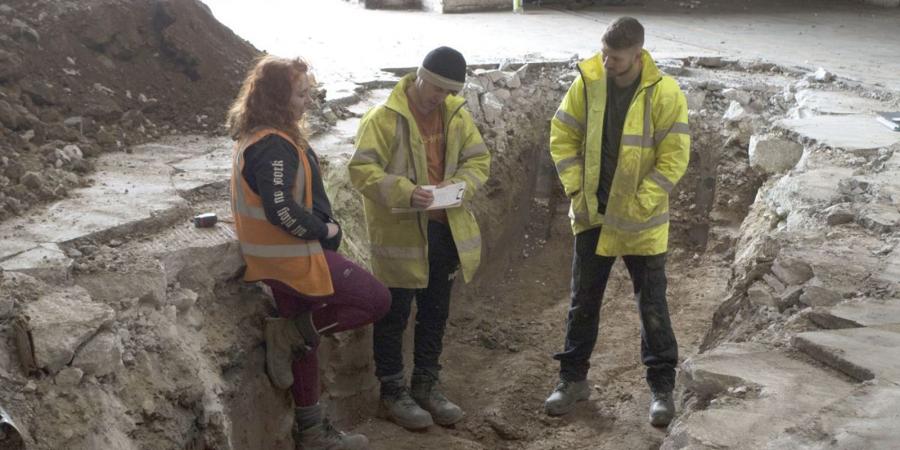Our placement at Wessex Archaeology in Sheffield has given us a valuable insight into the world of commercial archaeology. Having only had experience of research excavations in the past, the three weeks we have spent on placement between March and April have been informative, giving us a real idea of what to expect when gaining employment in this sector.
We spent a significant amount of time carrying out post-excavation work necessary for current projects such as Pontefract Castle and Hornsea. In our first week, we completed tasks such as finds washing, labelling, marking and quantifying finds. This helped us to settle into our role and gain a brief background to the mentioned sites as well as post-excavation processing. As well as this, these necessary tasks helped give us a very useful perspective of what we may face if we were to work in the sector of commercial archaeology and the demands of archiving finds.
Time spent on site, at Newburgh in Bradwell where an old glassworks factory was due for demolition prior to development, really brought to light the differences between research and commercial archaeology since work was carried out to meet both the demands of the client and county planning department. The site was said to be of archaeological potential due to its proximity to the scheduled archaeological monument Grey Ditch, an early medieval landscape feature believed to have marked a territorial boundary. One unusual aspect of the site however was that it was still standing and yet to be demolished! This gave us quite a nice and cosy place to dig inside whilst the rain poured outside. Being on site, we both learnt multiple skills which will give us a head start when we first gain archaeological employment. The familiarisation gained with industrial sites was valuable and different to anything we had experienced before. Health and Safety requirements for instance, were highlighted due to the nature of the site and presence of heavy machinery. Because of the dangers of working on a construction site, and complexity of the equipment we could employ, we found that various forms of training are required for tasks such as machine watching or scanning for live electrical wires. The working processes that take place on a construction site differ completely from the average archaeology site in a field, with many more issues and challenges arising all the time.
We both had an interest in built heritage coming into the placement at Wessex so it was beneficial to be able to gain an insight into this area of work and see how historic building recording works in practice. Time spent talking to members of staff working on current historic buildings projects, looking at legislation and previously completed projects had helped us both gauge an idea as to the nature of the work and the archaeology’s role in the planning process. We now have a better idea as to the steps necessary to take to achieve a career in this line of work.
Overall our experience at Wessex Archaeology in Sheffield was an invaluable one. We got to experience various roles that are employed by the organisation and at the same time not have it sugar-coated. Something we’ll appreciate if we do eventually get a job in this sector.
By Tom Holt and Ben Radford
